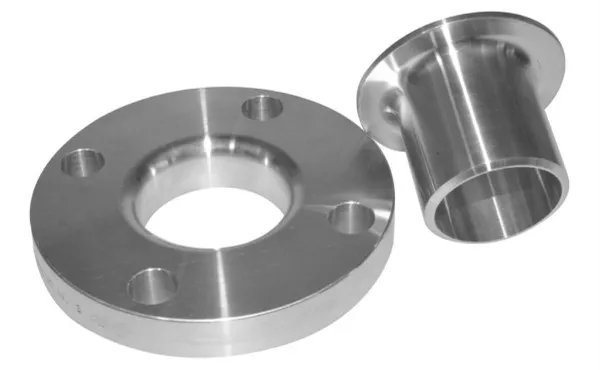-
Cangzhou Yulong Steel Co., Ltd.
-
Phone:
+86 13303177267 -
Email:
admin@ylsteelfittings.com
- English
- Arabic
- Italian
- Spanish
- Portuguese
- German
- kazakh
- Persian
- Greek
- French
- Russian
- Polish
- Thai
- Indonesian
- Vietnamese
- Zulu
- Korean
- Uzbek
- Hindi
- Serbian
- Malay
- Ukrainian
- Gujarati
- Haitian Creole
- hausa
- hawaiian
- Hebrew
- Miao
- Hungarian
- Icelandic
- igbo
- irish
- Japanese
- Javanese
- Kannada
- Khmer
- Rwandese
- Afrikaans
- Albanian
- Amharic
- Armenian
- Azerbaijani
- Basque
- Belarusian
- Bengali
- Bosnian
- Bulgarian
- Catalan
- Cebuano
- China
- China (Taiwan)
- Corsican
- Croatian
- Czech
- Danish
- Esperanto
- Estonian
- Finnish
- Frisian
- Galician
- Georgian
- Kurdish
- Kyrgyz
- Lao
- Latin
- Latvian
- Lithuanian
- Luxembourgish
- Macedonian
- Malgashi
- Malayalam
- Maltese
- Maori
- Marathi
- Mongolian
- Myanmar
- Nepali
- Norwegian
- Norwegian
- Occitan
- Pashto
- Dutch
- Punjabi
- Romanian
- Samoan
- Scottish Gaelic
- Sesotho
- Shona
- Sindhi
- Sinhala
- Slovak
- Slovenian
- Somali
- Sundanese
- Swahili
- Swedish
- Tagalog
- Tajik
- Tamil
- Tatar
- Telugu
- Turkish
- Turkmen
- Urdu
- Uighur
- Welsh
- Bantu
- Yiddish
- Yoruba

Nov . 12, 2024 07:36 Back to list
a333 astm
Understanding A333 and ASTM Standards
In the realm of materials engineering, the importance of standards cannot be overstated. Standards are designed to ensure quality, safety, and interoperability in various applications. One such standard that plays a crucial role in the construction and manufacturing sectors is ASTM A333, which governs the specifications for seamless and welded steel pipe for low-temperature service.
What is ASTM A333?
ASTM A333 is a specification developed by ASTM International, previously known as the American Society for Testing and Materials. This standard outlines the requirements for seamless and welded carbon and alloy steel pipes intended for use at low temperatures, specifically below -50°F (-45°C). The pipes covered under this specification are used in various industries, including oil and gas, petrochemical, and cryogenic applications. They are often employed in situations where components must withstand harsh environmental conditions while maintaining their mechanical properties.
Grades of ASTM A333
The ASTM A333 specification includes several grades, each with its own chemical composition and mechanical property requirements. The most commonly used grades include
- Grade 1 This grade offers the highest level of toughness and is suitable for low-temperature applications. It has a carbon content limited to 0.18% and is typically used in cryogenic service. - Grade 6 This grade is often employed in applications that require good ductility and toughness at low temperatures, with a maximum carbon content of 0.30%.
- Grade 8 This grade has slightly higher alloy content and is designed for use in more demanding environments, offering enhanced strength and toughness.
The specific properties dictated by these grades make them suitable for various applications across industries, ensuring reliability where it is most needed.
a333 astm

Importance of ASTM A333 Compliance
Compliance with ASTM A333 is essential for manufacturers and end-users alike. For manufacturers, adhering to this standard helps assure customers that the material will perform as expected under low-temperature conditions. This not only fosters trust but also reduces the risk of failures that could lead to severe safety hazards, costly downtime, or environmental damage.
For end-users, particularly in sectors where material failure can have catastrophic consequences, specifying ASTM A333 compliant materials mitigates risks. Industries that rely on pipelines, valves, and other equipment designed for use in extreme conditions benefit significantly from these specifications. The assurance of quality and reliability that comes from ASTM compliance is invaluable.
Manufacturing Considerations
In the manufacturing of ASTM A333 pipes, stringent processes must be followed to ensure quality control. This includes rigorous testing protocols such as tensile testing, impact testing at specified temperatures, and non-destructive examination methods. These processes help to ensure that the pipes meet the defined mechanical property requirements and are free from defects that could potentially compromise their integrity.
Furthermore, manufacturers must also consider the selection of appropriate materials and heat treatment processes. Properly executed heat treatment can significantly enhance the performance characteristics of the steel, particularly in regards to toughness and ductility—two critical factors in low-temperature service.
Conclusion
The ASTM A333 standard serves as a cornerstone for the production and use of low-temperature steel pipes, ensuring that they meet necessary safety and performance criteria in demanding environments. Its structured approach to quality —via grading systems and rigorous testing— provides assurance for industries that utilize these materials in critical applications. By understanding and adhering to ASTM A333, manufacturers and users alike can ensure that their equipment operates safely and effectively, even in the most challenging conditions. This commitment to quality not only enhances operational reliability but also promotes a culture of safety and accountability in industries where it matters most.
Latest news
-
ANSI 150P SS304 SO FLANGE
NewsFeb.14,2025
-
ASTM A333GR6 STEEL PIPE
NewsJan.20,2025
-
ANSI B16.5 WELDING NECK FLANGE
NewsJan.15,2026
-
ANSI B16.5 SLIP-ON FLANGE
NewsApr.19,2024
-
SABS 1123 FLANGE
NewsJan.15,2025
-
DIN86044 PLATE FLANGE
NewsApr.19,2024
-
DIN2527 BLIND FLANGE
NewsApr.12,2024
-
JIS B2311 Butt-Welding Fittings LR/SR 45°/90° /180°Seamless/Weld
NewsApr.23,2024











